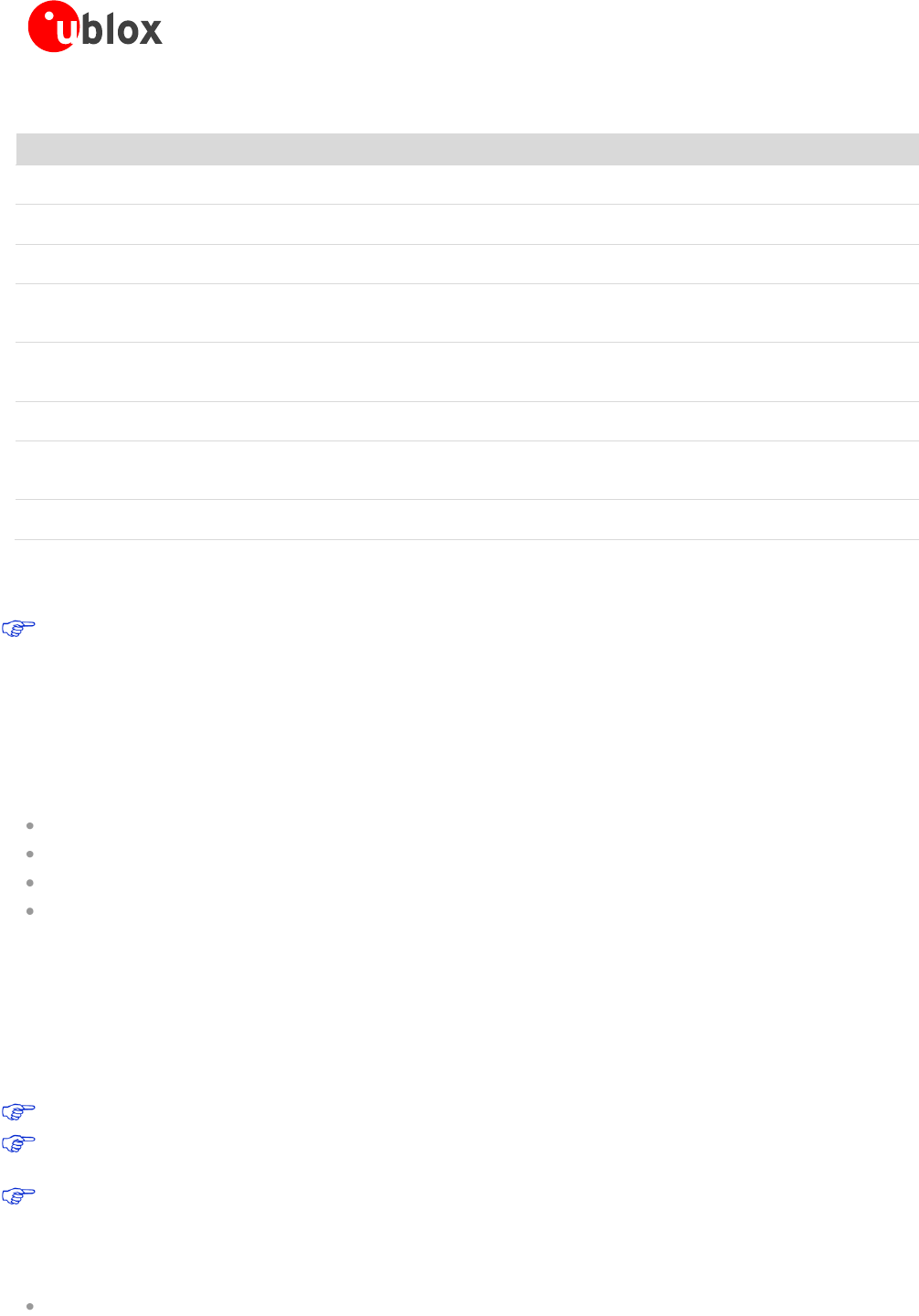Integration Guide
Table Of Contents
- Preface
- Contents
- 1 System description
- 1.1 Overview
- 1.2 Architecture
- 1.3 Pin-out
- 1.4 Operating modes
- 1.5 Power management
- 1.6 System functions
- 1.7 RF connection
- 1.8 SIM interface
- 1.9 Serial Communication
- 1.10 Audio
- 1.11 ADC input (LEON-G100 only)
- 1.12 General Purpose Input/Output (GPIO)
- 1.13 M2M Setup Schematic Example
- 1.14 Approvals
- 2 Design-In
- 3 Handling and soldering
- 4 Product Testing
- Appendix
- A Extra Features
- B Glossary
- Related documents
- Revision history
- Contact

LEON-G100/G200 - System Integration Manual
GSM.G1-HW-09002-F3 Preliminary System description
Page 42 of 101
The UART interface includes the following lines:
Name
Description
Remarks
DSR
Data set ready
Module output, functionality of ITU-T V.24 Circuit 107 (Data
set ready)
RI
Ring Indicator
Module output, functionality of ITU-T V.24 Circuit 125
(Calling indicator)
DCD
Data carrier detect
Module output, functionality of ITU-T V.24 Circuit 109 (Data
channel received line signal detector)
DTR
Data terminal ready
Module input, functionality of ITU-T V.24 Circuit 108/2 (Data
terminal ready)
Internal active pull-up to 2.85 V enabled.
RTS
Ready to send
Module hardware flow control input, functionality of ITU-T
V.24 Circuit 105 (Request to send)
Internal active pull-up to 2.85 V enabled.
CTS
Clear to send
Module hardware flow control output, functionality of ITU-T
V.24 Circuit 106 (Ready for sending)
TxD
Transmitted data
Module data input, functionality of ITU-T V.24 Circuit 103
(Transmitted data)
Internal active pull-up to 2.85 V enabled.
RxD
Received data
Module data output, functionality of ITU-T V.24 Circuit 104
(Received data)
Table 16: UART pins
UART interface pins ESD rating is 1 kV (contact discharge). A higher protection level could be required if
the lines are externally accessible on the application board. A higher protection level can be achieved
mounting an ESD protection (e.g. EPCOS CA05P4S14THSG varistor array) on the lines connected to
these pins if they are externally accessible on the application board.
1.9.1.1 UART features
UART interface is controlled and operated with:
AT commands according to 3GPP TS 27.007 [5]
AT commands according to 3GPP TS 27.005 [6]
AT commands according to 3GPP TS 27.010 [7]
u-blox AT commands
All flow control handshakes are supported by the UART interface and can be set by appropriate AT commands
(see u-blox 2G GSM/GPRS AT Commands Manual [2]): hardware flow control (RTS/CTS), software flow control
(XON/XOFF), or no flow control.
Autobauding is supported. It can be enabled or disabled by an AT command (see u-blox 2G GSM/GPRS AT
Commands Manual [2]). Autobauding is enabled by default.
Hardware flow control is enabled by default.
For the complete list of supported AT commands and their syntax refer to the u-blox 2G GSM/GPRS AT
Commands Manual [2].
Autobauding result can be unpredictable with spurious data if idle-mode (power-saving) is entered and
the hardware flow control is disabled.
The following baud rates can be configured using AT commands:
2400 b/s










